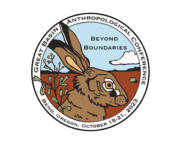Chewaucan and Warner Level Sponsors

Today, we recognize three sponsors, Lower Columbia Research at the Chewaucan Level and Legacy Anthropology and the Archaeological Society of Central Oregon (ASCO) at the Warner Level. Legacy Anthropology is a full-service archaeological consulting company established in 2019 providing archaeological and historic preservation consulting services throughout Washington State. They collectively have over 15 years of experience in cultural resource management on over 150 projects including surveys and construction monitoring for road improvements, utility upgrades, bridge replacements, commercial construction, and residential development. They are a certified Minority/Woman-owned business. To learn more, please visit https://legacyanthropology.com The ASCO is a group of amateur, avocational, and professional archaeologists who share common interests in the history and prehistory of central Oregon. Their primary goal is to stimulate public interest in the preservation and research of past lifeways. ASCO was organized in 1944 and has a current membership of over 100. To learn more, please visit https://ascoinfo.net/
